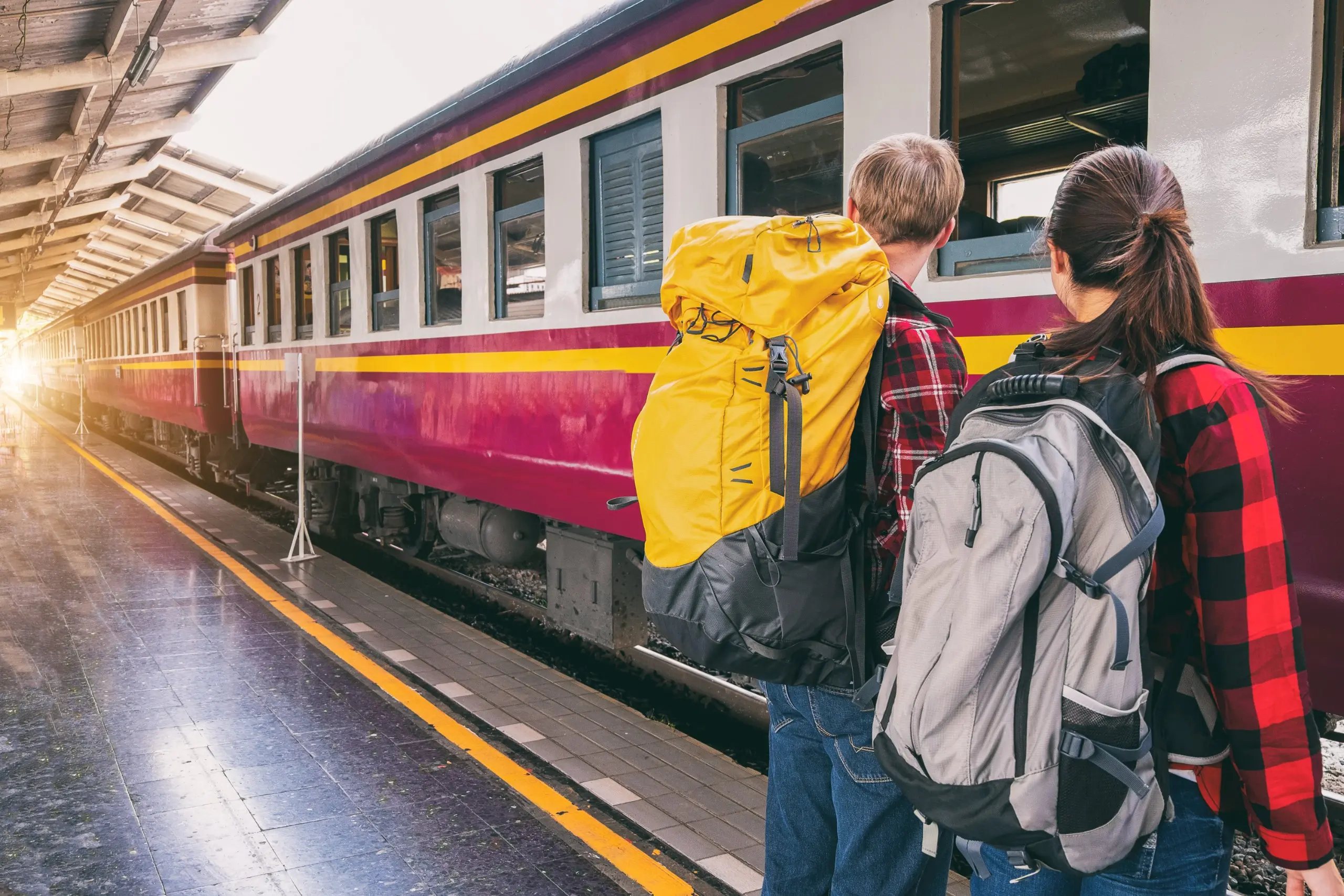The Ultimate Backpacking Essentials Guide
Backpacking is an exhilarating adventure that allows you to explore the world on your own terms. Whether you’re embarking on a multi-day trek through the wilderness or backpacking across continents, having the right gear is essential for a successful and enjoyable trip. In this ultimate backpacking essentials guide, we will cover everything you need to know about choosing the right backpack, essential clothing, footwear, sleeping gear, cooking and eating equipment, hydration and water purification, navigation tools, first aid kits, personal care items, safety and security, and packing tips and tricks. So, let’s dive in and discover what you really need on the road.
Choosing the Right Backpack: Size, Fit, and Features
When it comes to backpacking, your backpack is your lifeline. It carries all your essentials and should be comfortable, durable, and well-designed. The first step in choosing the right backpack is determining the size you need. Consider the length of your trip, the climate you’ll be traveling in, and the amount of gear you’ll be carrying. A general rule of thumb is to choose a backpack with a capacity of 40-60 liters for shorter trips and 60-80 liters for longer journeys.
Fit is crucial when it comes to backpacks. Look for adjustable shoulder straps, a padded hip belt, and a sternum strap to distribute the weight evenly and prevent discomfort. Try on different backpacks and walk around with them to ensure a proper fit. Additionally, consider the features of the backpack, such as multiple compartments, external attachment points, and a rain cover, which can make organizing and accessing your gear much easier.
Essential Clothing for Backpackers: Layering and Versatility
When it comes to clothing, layering is key. Choose lightweight, moisture-wicking base layers that will keep you dry and comfortable. Mid-layers, such as fleece jackets or down vests, provide insulation, while outer layers, like waterproof and windproof jackets, protect you from the elements. Opt for versatile clothing items that can be mixed and matched, allowing you to adapt to changing weather conditions.
Invest in high-quality socks and underwear made from moisture-wicking materials to prevent blisters and chafing. Don’t forget to pack a hat, gloves, and a buff or scarf to protect yourself from the sun, wind, and cold. Finally, choose quick-drying and lightweight pants and shorts that are suitable for both hiking and casual wear.
Footwear for the Trail: Comfort and Durability
Your choice of footwear can make or break your backpacking experience. Invest in a pair of sturdy, waterproof hiking boots that provide ankle support and have a good grip. Break them in before your trip to avoid blisters and discomfort. If you’re planning on hiking in warmer climates or on less challenging terrain, lightweight hiking shoes or trail runners may be a more suitable option.
In addition to your main footwear, pack a pair of comfortable camp shoes or sandals to give your feet a break at the end of the day. Don’t forget to bring extra pairs of socks to keep your feet dry and blister-free.
Sleeping Gear: Finding the Perfect Balance of Weight and Comfort
A good night’s sleep is essential for a successful backpacking trip. When it comes to sleeping gear, finding the perfect balance between weight and comfort is crucial. Invest in a lightweight and compact sleeping bag that is suitable for the climate you’ll be traveling in. Consider the temperature rating of the sleeping bag and choose one that will keep you warm without being too bulky.
To add an extra layer of comfort, bring a sleeping pad or inflatable mattress to provide insulation and cushioning. Look for lightweight options that can be easily packed and inflated. Additionally, consider bringing a lightweight and compact pillow or using a stuff sack filled with clothes as a makeshift pillow.
Cooking and Eating on the Road: Lightweight and Functional Gear
Eating well on the road is essential for maintaining energy levels and staying healthy. When it comes to cooking and eating gear, prioritize lightweight and functional items. Invest in a lightweight backpacking stove that is fuel-efficient and easy to use. Consider the type of fuel it requires and the availability of fuel sources in the areas you’ll be traveling to.
Pack a lightweight and compact cookware set that includes a pot, a pan, and utensils. Look for non-stick options that are easy to clean. Additionally, bring a lightweight and collapsible water bottle or hydration bladder to stay hydrated on the trail. Consider using a water filter or purifier to ensure the safety of the water you consume.
Hydration and Water Purification: Staying Safe and Hydrated
Staying hydrated is crucial when backpacking, especially in hot and dry climates. Dehydration can lead to fatigue, dizziness, and even more serious health issues. Always carry enough water to last between water sources, and drink regularly throughout the day.
To ensure the safety of the water you consume, consider using a water filter or purifier. These devices remove bacteria, protozoa, and other contaminants from natural water sources, making it safe to drink. Alternatively, you can use water purification tablets or drops, which are lightweight and easy to carry.
Navigation Tools: Maps, Compasses, and GPS Devices
When venturing into the wilderness, having reliable navigation tools is essential for staying on track and avoiding getting lost. Carry detailed topographic maps of the areas you’ll be traveling in, and familiarize yourself with the terrain and landmarks. Additionally, bring a compass and learn how to use it to navigate using a map and landmarks.
While traditional navigation tools are reliable, GPS devices can provide additional convenience and accuracy. Consider investing in a handheld GPS device that allows you to track your route, mark waypoints, and find your location even in remote areas. However, always carry a map and compass as a backup in case your GPS device fails or runs out of battery.
Essential First Aid Kit: Treating Common Injuries and Illnesses
A well-stocked first aid kit is essential for treating common injuries and illnesses on the trail. Your first aid kit should include adhesive bandages, sterile gauze pads, adhesive tape, antiseptic wipes, blister treatment, pain relievers, antihistamines, and any necessary prescription medications.
Additionally, consider including items such as a splint, a thermometer, tweezers, scissors, and a CPR mask. Familiarize yourself with basic first aid procedures and take a wilderness first aid course to be prepared for emergencies.
Personal Care Items: Staying Clean and Fresh on the Trail
Staying clean and fresh on the trail is not only important for personal hygiene but also for preventing infections and maintaining morale. Pack travel-sized toiletries, including biodegradable soap, toothpaste, a toothbrush, and a small towel or packable washcloth.
Consider bringing wet wipes or hand sanitizer for quick clean-ups when water is scarce. Don’t forget to pack sunscreen, lip balm, and insect repellent to protect yourself from the sun and bugs.
Safety and Security: Protecting Yourself and Your Belongings
When backpacking, safety should always be a top priority. Protect yourself and your belongings by taking necessary precautions. Carry a whistle or a personal alarm to attract attention in case of an emergency. Consider bringing a lightweight and compact personal locator beacon (PLB) or satellite messenger device that allows you to send distress signals and communicate with emergency services.
To protect your belongings, invest in a sturdy and lockable backpack or use a combination lock to secure the zippers. Consider using a money belt or a hidden pouch to keep your valuables safe. Additionally, research the safety of the areas you’ll be traveling to and take necessary precautions, such as avoiding dangerous areas and staying informed about local customs and regulations.
Packing Tips and Tricks: Maximizing Space and Minimizing Weight
When it comes to packing for a backpacking trip, maximizing space and minimizing weight are essential. Start by making a packing list and laying out all your gear before packing. Consider the weight and size of each item and prioritize the essentials.
Use packing cubes or compression sacks to organize and compress your clothing and gear. Roll your clothes instead of folding them to save space. Pack heavier items closer to your back to distribute the weight evenly. Finally, consider leaving non-essential items behind or finding lightweight alternatives to reduce the overall weight of your backpack.
In conclusion, having the right backpacking essentials is crucial for a successful and enjoyable trip. From choosing the right backpack to packing efficiently, each aspect plays a significant role in your overall experience. By investing in high-quality gear, prioritizing comfort and functionality, and taking necessary safety precautions, you can embark on your backpacking adventure with confidence and peace of mind. So, pack your bags, hit the road, and embrace the freedom and excitement of backpacking.



